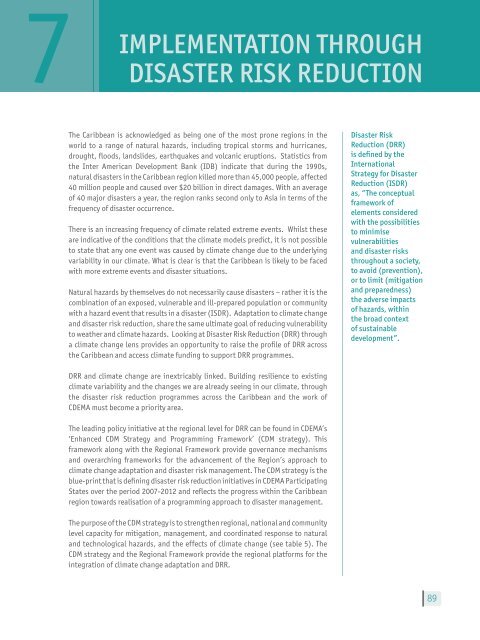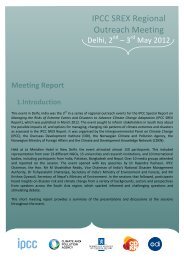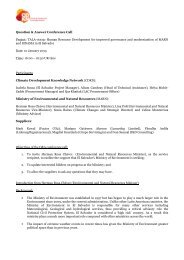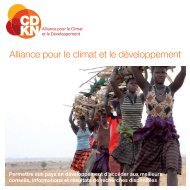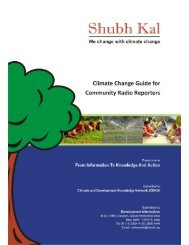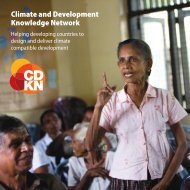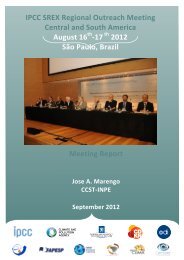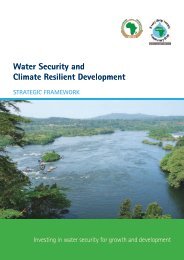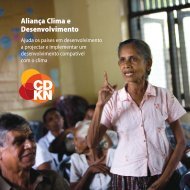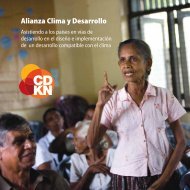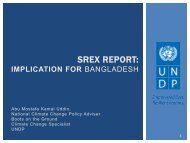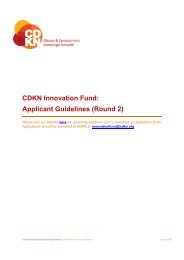Implementation Plan - CDKN Global
Implementation Plan - CDKN Global
Implementation Plan - CDKN Global
- No tags were found...
Create successful ePaper yourself
Turn your PDF publications into a flip-book with our unique Google optimized e-Paper software.
7IMPLEMENTATIONTHROUGHDISASTER RISK REDUCTIONDELIVERING TRANSFORMATIONAL CHANGE 2011-21The Caribbean is acknowledged as being one of the most prone regions in theworld to a range of natural hazards, including tropical storms and hurricanes,drought, floods, landslides, earthquakes and volcanic eruptions. Statistics fromthe Inter American Development Bank (IDB) indicate that during the 1990s,natural disasters in the Caribbean region killed more than 45,000 people, affected40 million people and caused over $20 billion in direct damages. With an averageof 40 major disasters a year, the region ranks second only to Asia in terms of thefrequency of disaster occurrence.There is an increasing frequency of climate related extreme events. Whilst theseare indicative of the conditions that the climate models predict, it is not possibleto state that any one event was caused by climate change due to the underlyingvariability in our climate. What is clear is that the Caribbean is likely to be facedwith more extreme events and disaster situations.Natural hazards by themselves do not necessarily cause disasters – rather it is thecombination of an exposed, vulnerable and ill-prepared population or communitywith a hazard event that results in a disaster (ISDR). Adaptation to climate changeand disaster risk reduction, share the same ultimate goal of reducing vulnerabilityto weather and climate hazards. Looking at Disaster Risk Reduction (DRR) througha climate change lens provides an opportunity to raise the profile of DRR acrossthe Caribbean and access climate funding to support DRR programmes.Disaster RiskReduction (DRR)is defined by theInternationalStrategy for DisasterReduction (ISDR)as, “The conceptualframework ofelements consideredwith the possibilitiesto minimisevulnerabilitiesand disaster risksthroughout a society,to avoid (prevention),or to limit (mitigationand preparedness)the adverse impactsof hazards, withinthe broad contextof sustainabledevelopment”.DRR and climate change are inextricably linked. Building resilience to existingclimate variability and the changes we are already seeing in our climate, throughthe disaster risk reduction programmes across the Caribbean and the work ofCDEMA must become a priority area.The leading policy initiative at the regional level for DRR can be found in CDEMA’s‘Enhanced CDM Strategy and Programming Framework’ (CDM strategy). Thisframework along with the Regional Framework provide governance mechanismsand overarching frameworks for the advancement of the Region’s approach toclimate change adaptation and disaster risk management. The CDM strategy is theblue-print that is defining disaster risk reduction initiatives in CDEMA ParticipatingStates over the period 2007-2012 and reflects the progress within the Caribbeanregion towards realisation of a programming approach to disaster management.The purpose of the CDM strategy is to strengthen regional, national and communitylevel capacity for mitigation, management, and coordinated response to naturaland technological hazards, and the effects of climate change (see table 5). TheCDM strategy and the Regional Framework provide the regional platforms for theintegration of climate change adaptation and DRR.89


